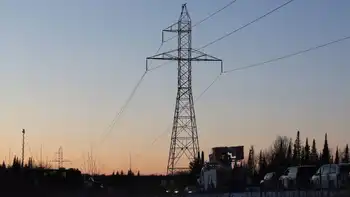Vietnam to build two nuclear power plants
By Industrial Info Resources
Electrical Testing & Commissioning of Power Systems
Our customized live online or in‑person group training can be delivered to your staff at your location.

- Live Online
- 12 hours Instructor-led
- Group Training Available
The announcement was made at a nuclear power forum in Hanoi by the Ministry and Vietnam Energy Association.
Each plant will consist of two reactors of 2,000 megawatts of capacity. The first plant will be built on 540 hectares in the Phuoc Dinh Commune of the Ninh Phuoc district. The second plant will be commissioned in the Vinh Hai Commune of the Ninh Hai district. About 556 hectares have been allocated for this plant. Both plants are expected to be operational by 2021-22.
In 2007, a national strategy to develop and sustain energy demand by 2020 in Vietnam was approved. The plan also provides a long-term view of demand and supply in 2050, and indicates that Vietnam's focus on nuclear power is crucial to solving growing power demand. The plan states that nuclear power would account for 15%-20% of the national power output by 2020 and 20%-25% by 2050. To provide legal guidelines and framework for the country's nuclear power policy, the Atomic Energy Law was passed in June 2008. This will be effective beginning on January 1, 2009.
The World Bank has predicted that to sustain Vietnam's economy, which is expected to grow at an average of 6.8% annually over the next five years, the country's power demand is likely to increase by 10%-14% every year. The Ministry of Industry and Trade said Vietnam will require 294 billion kilowatt-hours (kWh) by 2020 and 562 billion kWh by 2030. The power generation capacity provided by the current sources will yield only 230 billion kWh by 2020 and 293 billion kWh by 2030.
In the last 10 years, Vietnam's demand for power has increased more than 15% annually, which is significantly higher than the country's GDP of 5%-7%. According to the power development plan, between 2006 and 2010, the country's demand for power is likely to grow at more than 16% annually. In 2007-08, Vietnam's power consumption was about 67.3 billion kWh, which is 15.16% more than in 2006-07. The Industry and Trade Ministry is planning an increase of 20% of current capacity to meet the power needs next year.
Vietnam has been struggling to meet its present power demand. The country has been relying on traditional sources like hydropower and coal to generate electricity. It has only recently turned its attention toward renewable resources like wind energy. The country imported 3.8 billion kWh from China this year.
Several new projects have been planned in Vietnam by 2050 that will include two projects in renewable energy, 17 coal-fired plants, 48 in hydroelectric power, five gas fired and two nuclear power plants. Thirteen new coal-based power projects will be commissioned in the next seven years.
Recently, Vietnam reduced its coal exports to 22 million tons, down 32%, to save resources for new power plants.
Vietnam's nuclear power policy has triggered nationwide debate and analyses. Experts say the success of the nuclear power plan is critically dependent on the choice of technology and expertise, suppliers and trained personnel. Technology for this program has not been finalized. Vietnam has limited personnel trained in nuclear technology and is expected to face hurdles in hiring. Training can take up to 15 years, and it will take about five years to build a nuclear plant.
Vietnam plans to start construction of the first plant by 2015.
Universities are being identified to impart nuclear technology education to students. National security and implementation of nuclear laws are also imperative, apart from procedures and laws relating to the treatment of nuclear waste, radiation and environmental safety. Hence, some experts believe that the country should go ahead with its nuclear power program in a phased manner and learn from the experience.
Asian countries are actively considering nuclear power programs for civilian use as a viable option to solve growing energy demand. With depleting traditional energy sources, focus is shifting to alternate and renewable sources of energy, making nuclear power one of the frontrunners.











